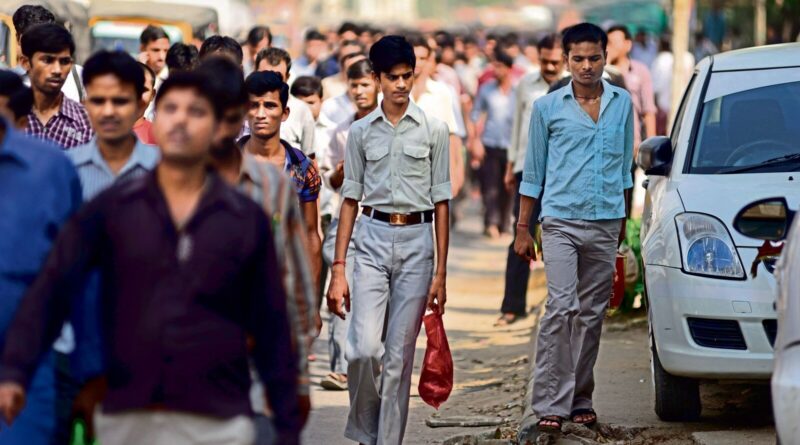The job challenge in India: We have to think beyond livelihoods
If there is one issue that has dominated the election debates over the past two months, it has been India’s jobs crisis. But what exactly is this so-called job challenge? Although one hears stories of educated youth who cannot find work, jobs mean different things to different people.
If there is one issue that has dominated the election debates over the past two months, it has been India’s jobs crisis. But what exactly is this so-called job challenge? Although one hears stories of educated youth who cannot find a job, jobs mean different things to different people.
If it means engaging in productive work, then job growth from 2017-18 was the highest in recent years, with the total number of workers in the economy increasing from 458 million in 2017 -18 to 563 million by 2022-23, as reported by the Periodic Labor Force Surveys (PLFS).
Hello! You are reading a paid article! Sign up now to continue reading.
Register now
Premium Benefits
35+ Premium articles every day
It is specially designed Newspapers every day
Access to 15+ Edition edition articles every day
Webinar for subscribers only by special reporters
E Paper, Archives, choose Articles from the Wall Street Journal & The Economist
Access to exclusive Subscribers only : Infographics and Podcasts
Unlock 35+ well researched
premium articles every day
Access to world views by
100+ exclusive articles from
international literature
5+ newsletter subscribers only
specially designed by experts
Free access to e-paper and
WhatsApp updates
If it means engaging in productive work, then job growth from 2017-18 was the highest in recent years, with the total number of workers in the economy increasing from 458 million in 2017 -18 to 563 million by 2022-23, as reported by the Periodic Labor Force Surveys (PLFS).
Last week, the National Statistics Office (NSO) released estimates from the quarterly survey of urban areas for January-March 2024; these confirm previously reported patterns. Urban males above the age of 15 saw their labor force participation increase from 67.7% in January-May 2022 to 69.8% in January-May. the same time.
But then, why is work a problem? Especially because in an economy like ours, which has a lot of economic pressure, finding jobs is a necessity. Most people of working age need some means of support, and only a few are able to live off accumulated wealth. For many people in India, unemployment is a constant concern.
Which also means that unemployment statistics are not the only way to understand the challenge. Although helpful, this data represents only one part of the problem. A grim outlook could indicate that rising jobs data may be masking growing problems in the economy.
Most of the job gains have been in agriculture and among female workers; this suggests looking for work caused by trauma in the past five years. Also consider that rising economic growth is often associated with a declining share of the labor force in agriculture, but this trend lasted until 2017-18 and saw a reversal thereafter, to produce questions about non-farm employment generation.
The concern about jobs extends to those seeking higher employment, which is a very large group. Among those employed, over the past decade there has been a decline in the quality of work and a decline in wages for such jobs. While self-employed workers in rural areas continue to experience declines in real wages for farm and non-farm work, the decline has been sharper for regular workers.
PLFS data suggests average rural earnings have fallen by 1.3% per year over the past five years, and average urban earnings have fallen by 2.7% per year. In fact, wages for regular workers have decreased since 2011-12, with real wages in rural areas decreasing by 0.6% per year since 2011-12 while urban wages have decreased by 1.2% per year in from 2011-12.
The quality of work has been a bigger challenge. The only thing that differentiates a regular employee from a part-time employee is the regular job. But the situation is bleak. Almost two-thirds of India’s permanent workers do not have a written contract, while only one-fourth have one longer than 3 years. Both of these indicators have worsened in from 2011-12.
The decline in real earnings from regular work has led to a situation where the wages of regular workers are no longer the same as the low level of part-time workers. In 2022, both of them earned an average monthly income of approx ₹3,000 per month or ₹100 per day.
Earlier this year, while releasing the India Employment Report 2024 by the International Labor Organization (ILO) and the Center for Human Development, the chief economic adviser (CEA) was criticized for saying that the government it creates jobs for everyone.
The CEA may be right in general, considering the limitations of the government in creating public sector activities, but the responsibility of management is not only to create government activities, but also to create conditions. which allows private organizations to employ people in a good way. activities.
It is also the government’s duty to provide an enabling framework for decent work, including social security provisions for those who may be employed as permanent or self-employed workers. Instead of political promises to create millions of jobs, a better way to tackle the jobs challenge is to initiate structural changes that can encourage labor-intensive sectors as well as small and medium-sized enterprises. India must improve the quality of work to ensure people social security as well as better wages.
#job #challenge #India #livelihoods
